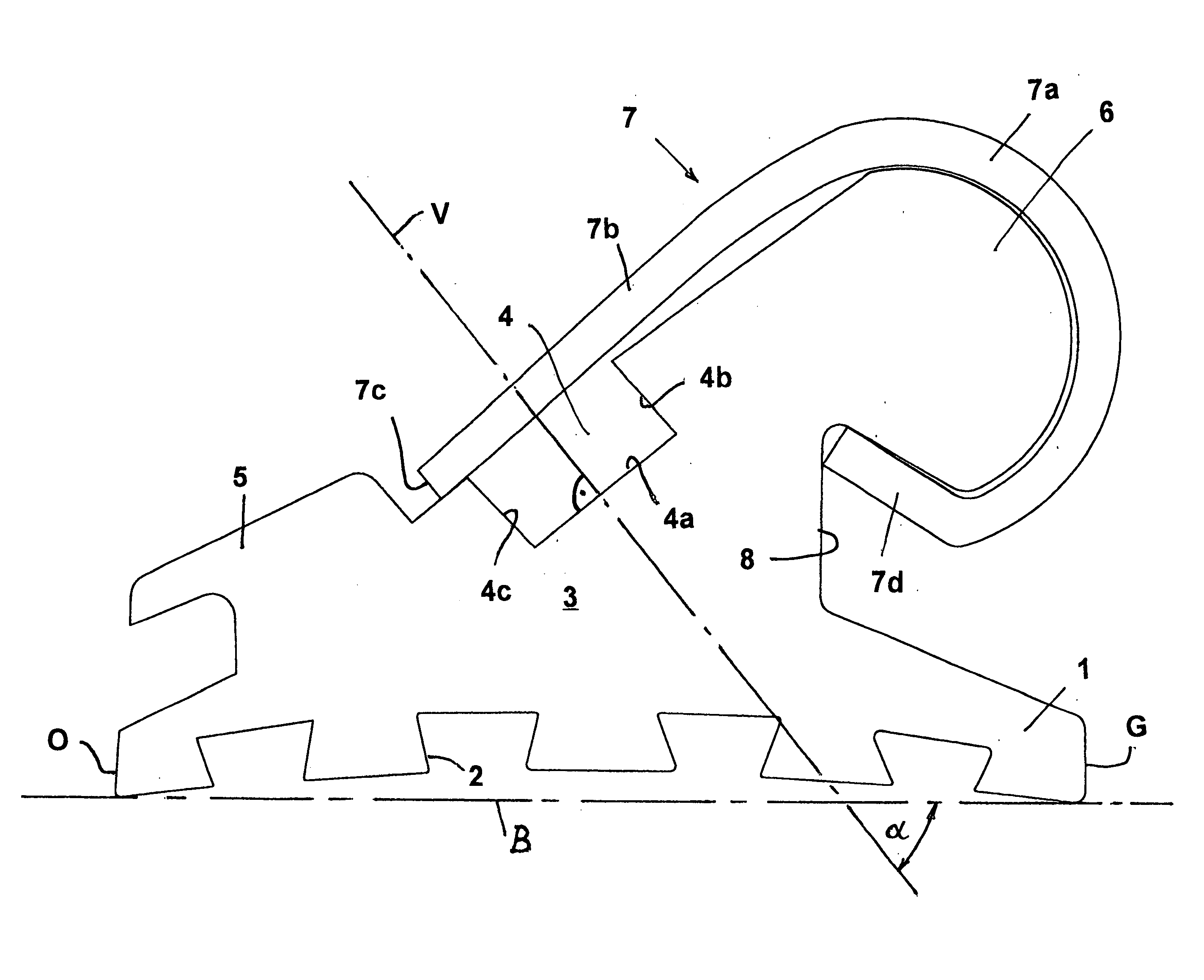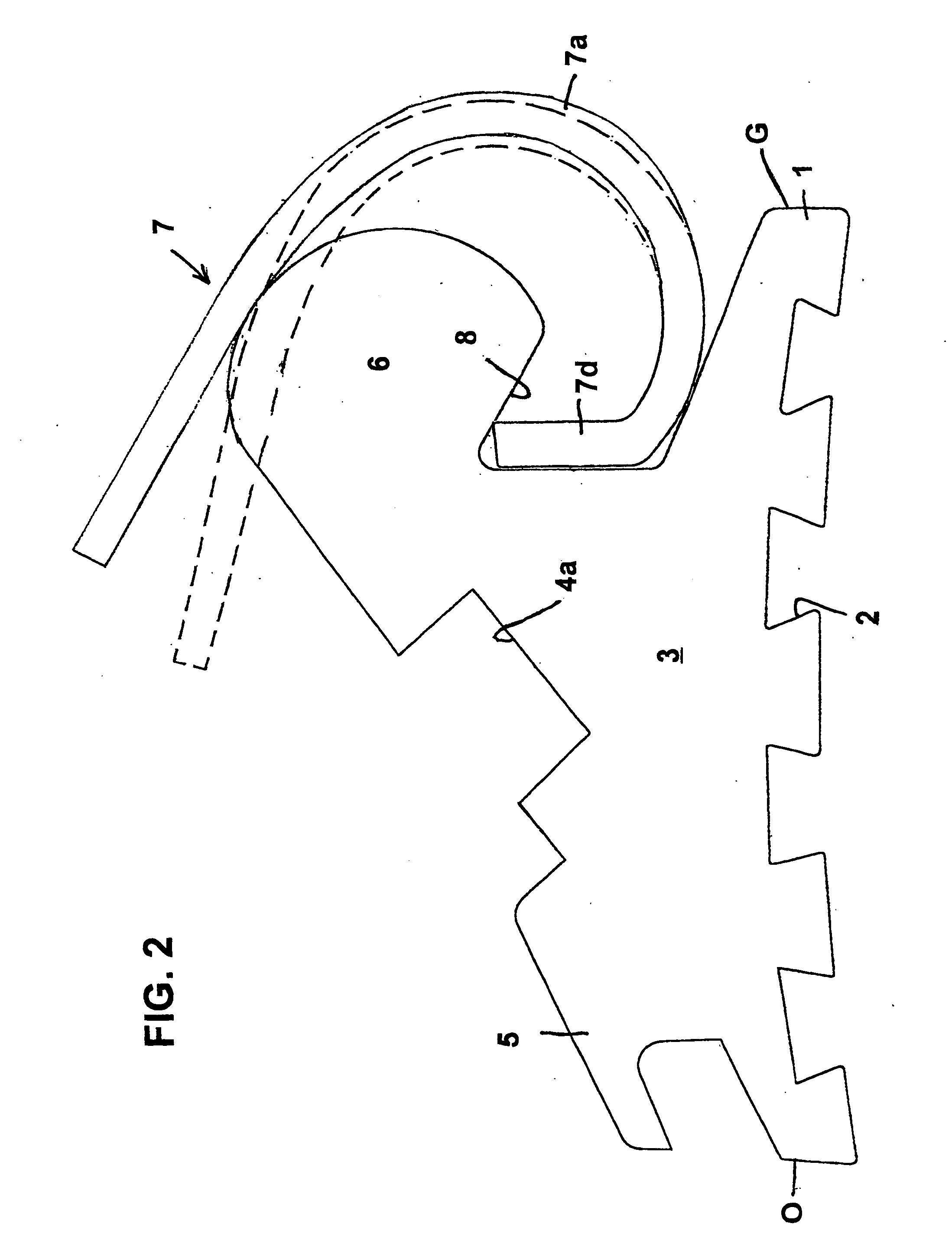Lingual bracket
a lingual bracket and bracket technology, applied in the field of lingual orthodontic brackets, can solve the problems of not sufficiently developing the force required for the rotation of teeth, unable to propose satisfactory solutions for lingual applications, and unable to achieve satisfactory results. , to achieve the effect of enlarging the resistance against the arch wir
- Summary
- Abstract
- Description
- Claims
- Application Information
AI Technical Summary
Benefits of technology
Problems solved by technology
Method used
Image
Examples
Embodiment Construction
[0037] The bracket according to FIG. 1 consists of a base plate 1 with grooves 2 on its lower side, said grooves having a dovetail-shaped cross section, and of a frame 3 in which a slot 4 of a rectangular cross section is formed. In the example shown, the depth of this slot 4 is smaller than its width. The frame 3 has two wings 5 and 6, which adjoin to the side walls of the slot 4 and which can be used for attaching ligatures. The bracket further includes a spring designated by 7, in this case a leaf spring, which has an arcuate section 7a, which extends over an arc of approximately 270.degree. and which changes over into an approximately straight section 7b, whose end portion covers the slot 54 in the closed condition, as shown in FIG. 1. The arcuate section 7a of the spring encompasses the wing 6 of the frame 3. The spring is held on the frame 3 by its own pre-tension in a state covering the slot 4. The spring 7 may also be a wire strap spring, as it is described in DE 44 07 100 C...
PUM
 Login to View More
Login to View More Abstract
Description
Claims
Application Information
 Login to View More
Login to View More - R&D
- Intellectual Property
- Life Sciences
- Materials
- Tech Scout
- Unparalleled Data Quality
- Higher Quality Content
- 60% Fewer Hallucinations
Browse by: Latest US Patents, China's latest patents, Technical Efficacy Thesaurus, Application Domain, Technology Topic, Popular Technical Reports.
© 2025 PatSnap. All rights reserved.Legal|Privacy policy|Modern Slavery Act Transparency Statement|Sitemap|About US| Contact US: help@patsnap.com



